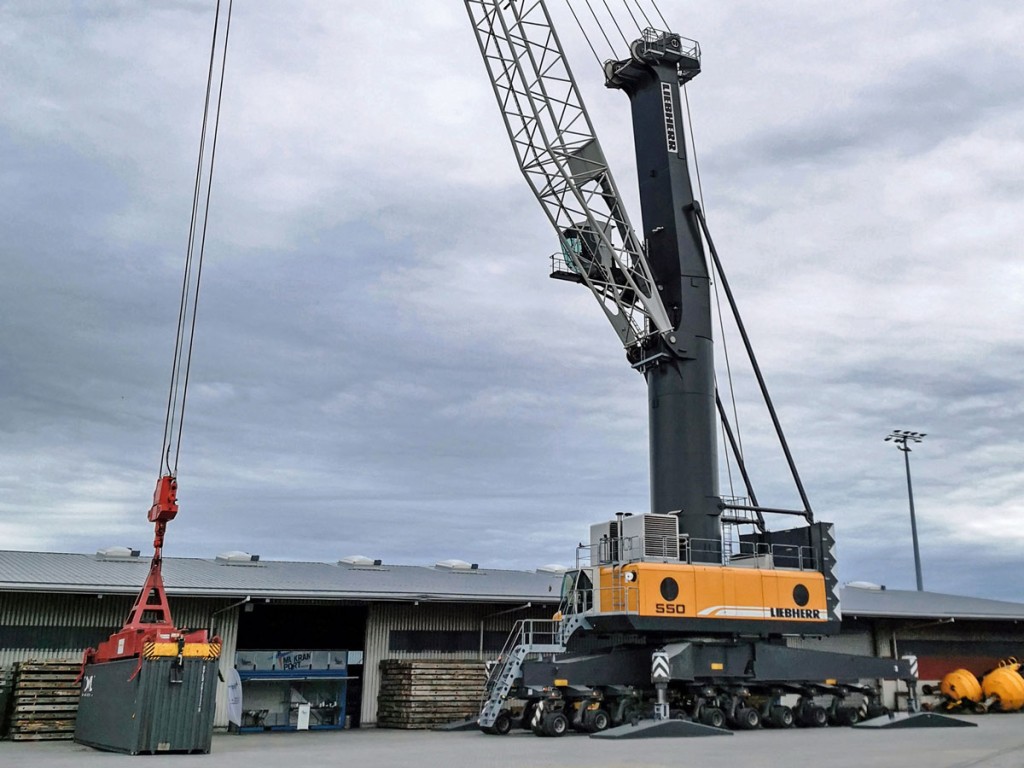Liebherr mobile harbour crane, type LHM 550 is the third LHM for Mukran Port Terminals GmbH in Sassnitz, Germany
Following a period of rental, Mukran Port Terminals GmbH at the Port of Sassnitz has purchased its third Liebherr mobile harbour crane, type LHM 550. With a maximum lifting capacity of up to 144 tonnes, the machine offers a wide range of applications. This is the sixth Liebherr mobile harbour crane in Sassnitz. This means that the port town on the island of Rügen has the highest LHM-density in the German speaking DACH region.

Suitable for any application
A year ago, Mukran Port Terminals leased a Liebherr LHM 550 mobile harbour crane. The performance and flexibility of the multipurpose handling machine convinced Mukran Port Terminals to purchase the machine.
"With the new mobile harbour crane, we are strengthening our position as a multipurpose port for future business in the project cargo sector. We are also taking into account the rapid development of traffic on the New Silk Road via the Mukran site as a crucial link," reports Harm Sievers, Managing Director of the operating company Mukran Port Terminals.
"With our trio of Liebherr cranes, we are ideally equipped to meet the increasing demands of the future. The versatility of the LHM 550 fits perfectly with the daily requirements at our terminal," Sievers adds. The multifunctionality of Liebherr mobile harbour cranes makes them attractive for all areas of application in the port. Thanks to the simple modular design, lifting devices can be replaced within a short time.
LHM 550 - a bestseller
With over 300 units sold, the LHM 550 is the bestseller in Liebherr's mobile harbour crane product portfolio. With a radius of 54 metres, the LHM 550 is the perfect crane for bulk handling in the Capesize ship class. In container handling, ships of the New Panamax class are the optimal working environment for the LHM 550. General cargo and heavy lift applications complete the field of application of this crane type. The innovative hydrostatic drive concept ensures increased efficiency and reduced fuel consumption compared to conventional drive types on the market.









